The article highlights some effective strategies for implementing receptive instructions in ABA therapy, particularly aimed at enhancing communication skills in children, especially those with autism. It’s all about finding what works best for each child, right? Personalized approaches, engaging activities, and collaboration with caregivers and therapists play a crucial role in helping kids better understand and remember instructions.
By tailoring interventions and providing consistent reinforcement, we can truly make a difference. Imagine the joy of seeing your child grasp new concepts through fun and interactive methods! Let’s explore this together and discover how these strategies can foster better communication skills in your little one.
The journey of enhancing receptive language skills in individuals with autism is both complex and rewarding. 🌟 With the right strategies, caregivers and therapists can significantly improve a child's ability to understand and respond to instructions.
In this article, we’ll explore ten effective strategies that not only personalize the approach to ABA therapy but also empower parents and educators to create engaging learning environments. However, the challenge remains: how can caregivers ensure consistency and motivation in their child's learning process while navigating the unique needs of each individual?
Let’s dive in together and discover ways to make this journey a little easier!
At Rori Behavioral Innovations, we truly understand the importance of tailored receptive teaching techniques in ABA therapy. By conducting thorough evaluations, our clinicians can pinpoint each individual’s unique strengths and challenges. This allows us to create a customized approach that aligns perfectly with their personal learning styles. Not only does this personalized method boost the effectiveness of our strategies, but it also significantly enhances the individual’s ability to understand and follow instructions.
By leveraging data-driven insights—like visual supports and structured programs—our clinicians continuously adapt these strategies. This ensures sustained progress and engagement throughout the therapy process. Plus, we’re excited to share that Rori Care employs advanced AI technology to automate the creation of progress reports. This innovation frees up more time for youth treatment, empowering caregivers with clear insights into their child’s development. It’s all about enhancing support and informed decision-making!
As Laura Grow points out, using concise auditory instructions can really elevate the effectiveness of our teaching methods. This commitment to personalized care is vital for fostering meaningful communication and social interaction in children with autism. Early detection of autism by ages 4.5 to 5 is crucial for prompt intervention, and we’re here to help.
We've seen through case studies that implementing customized strategies—like setting specific measurable objectives and using evidence-based methods—leads to significant improvements in communication abilities. This really underscores the importance of personalized care. Let’s explore this together! We're here to help you every step of the way!
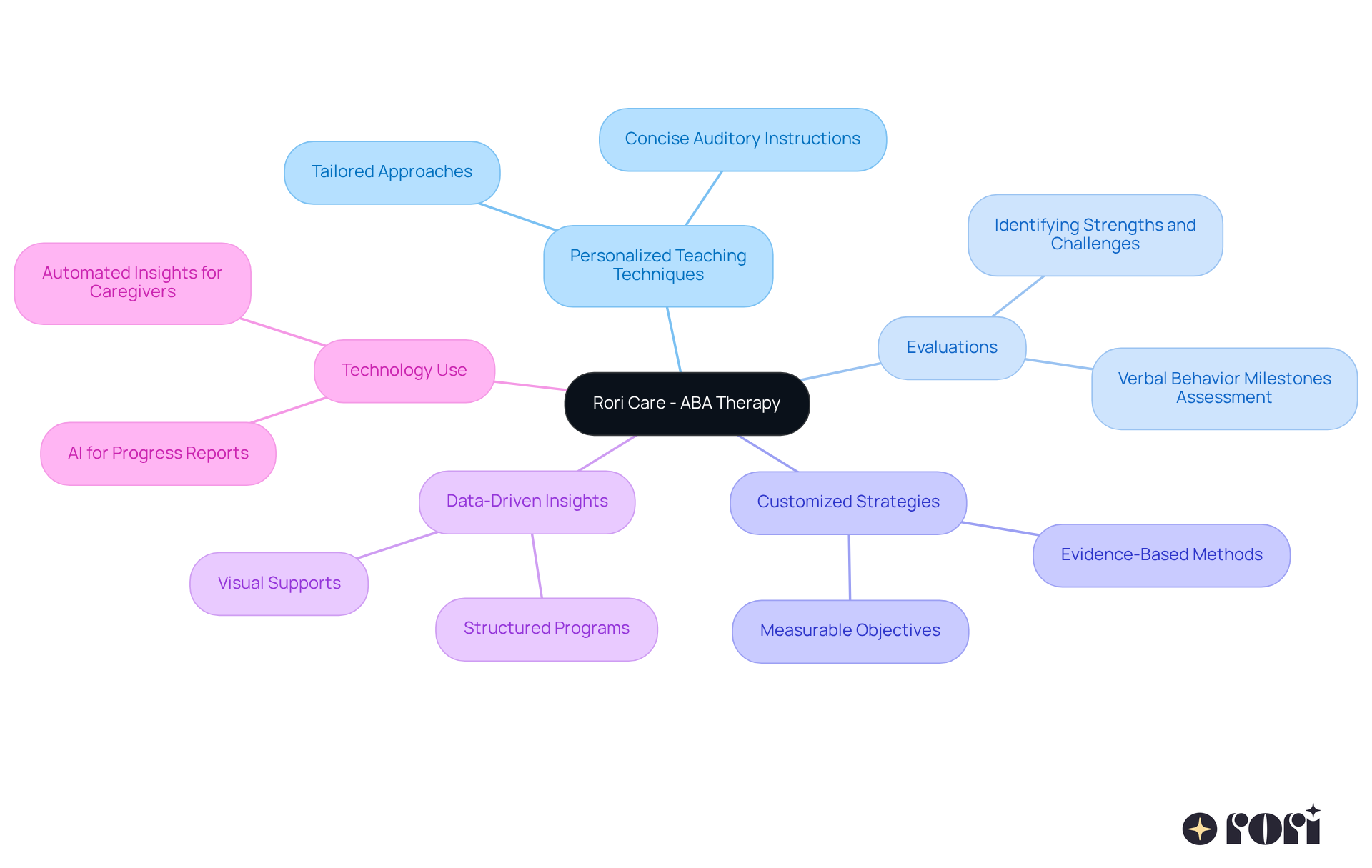
Visual communication tools, including picture schedules, flashcards, and visual timers, are incredibly helpful for enhancing receptive instructions aba in individuals of all ages, particularly those facing behavioral challenges such as Autism Spectrum Disorders and ADHD. These tools provide clear representations of verbal instructions, which serve as receptive instructions aba, making it easier to understand and respond appropriately.
By weaving visual aids into daily routines, parents and therapists can create a more structured learning environment. This approach not only supports children’s understanding and retention of information but also empowers caregivers with effective ABA techniques. Plus, it aligns perfectly with the principles of Applied Behavior Analysis, ensuring that each intervention is tailored to meet the unique needs of every individual.
Let’s explore this together and see how these tools can make a difference in your child’s learning journey!
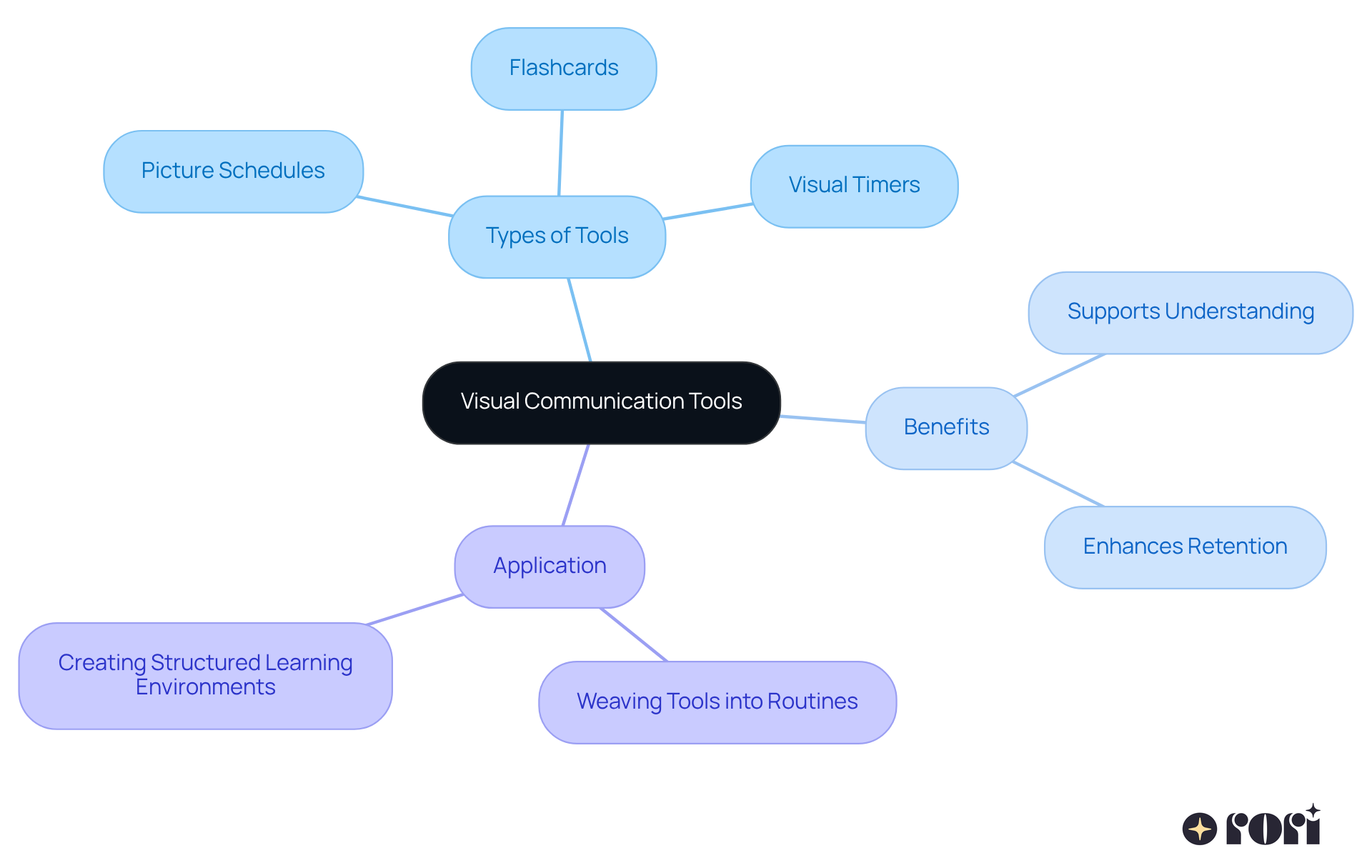
Parental engagement is so important for enhancing receptive instruction at home! When parents consistently use targeted language, visual aids, and organized routines, they can really help strengthen the skills their children are learning in therapy. Think about activities like cooking, playing games, or even doing daily chores—these are great ways for kids to practice their receptive language skills in a fun and meaningful way.
Working together with therapists to implement tailored strategies at home creates a supportive environment that fosters learning and growth. Studies show that kids who receive consistent reinforcement from their parents often do better at generalizing their communication skills, leading to greater success in different settings. Involved parents not only ensure consistency in interventions but also help their children thrive on their journey of language development.
Receptive instructions ABA are key in caregiver education! It empowers parents with a better understanding of ABA principles and approaches, enabling them to make informed decisions that positively influence their child's development. Plus, this education can help reduce caregiver stress and improve family dynamics, making it easier to implement those tailored strategies effectively at home. As specialists often highlight, parental engagement has a significant impact on a young person's success, especially for those with autism.
So let’s explore this together! We’re here to help you every step of the way!
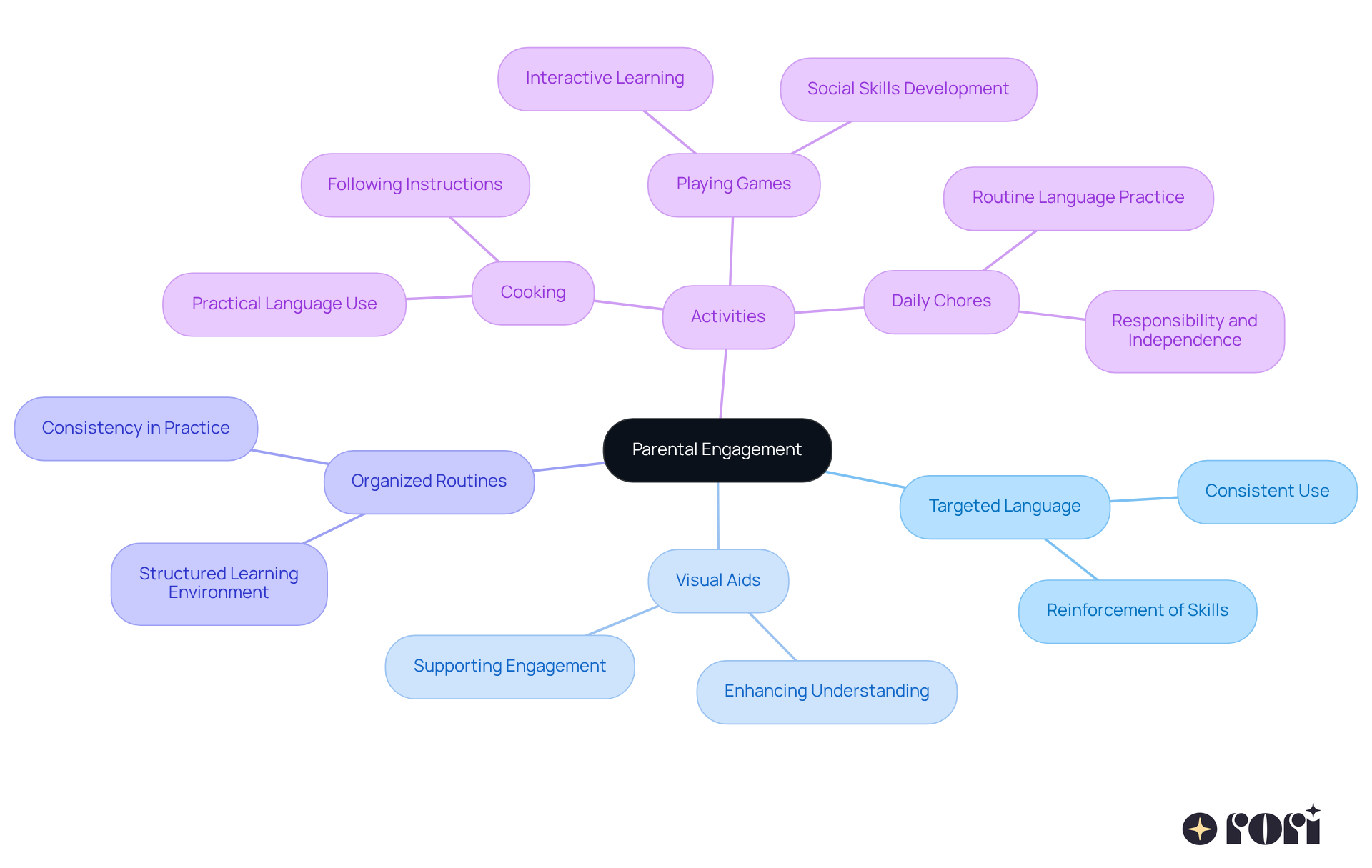
Implementing structured programs like task analysis and discrete trial training (DTT) can really make a difference in teaching receptive instructions ABA. These frameworks break down complex tasks into bite-sized steps, helping young learners gradually acquire new knowledge. A qualified behavior analyst crafts personalized plans that highlight measurable objectives and evidence-based strategies. This ensures continuous assessment to meet each individual's unique needs.
Research shows that DTT, which emphasizes clear instruction, prompting, and reinforcement, leads to impressive advancements in communication skills. For example, studies indicate that interventions based on receptive instructions ABA have a pooled effect size of 1.48 for receptive language improvement—pretty significant, right? By providing clear expectations and consistent support, structured programs help young individuals build confidence in their ability to follow instructions, ultimately leading to better communication outcomes.
Educators have observed that task analysis not only aids in skill acquisition but also encourages the generalization of learned behaviors across various contexts. This makes it a vital component of effective autism therapy. So, let’s explore this together and see how these strategies can support your child’s growth!
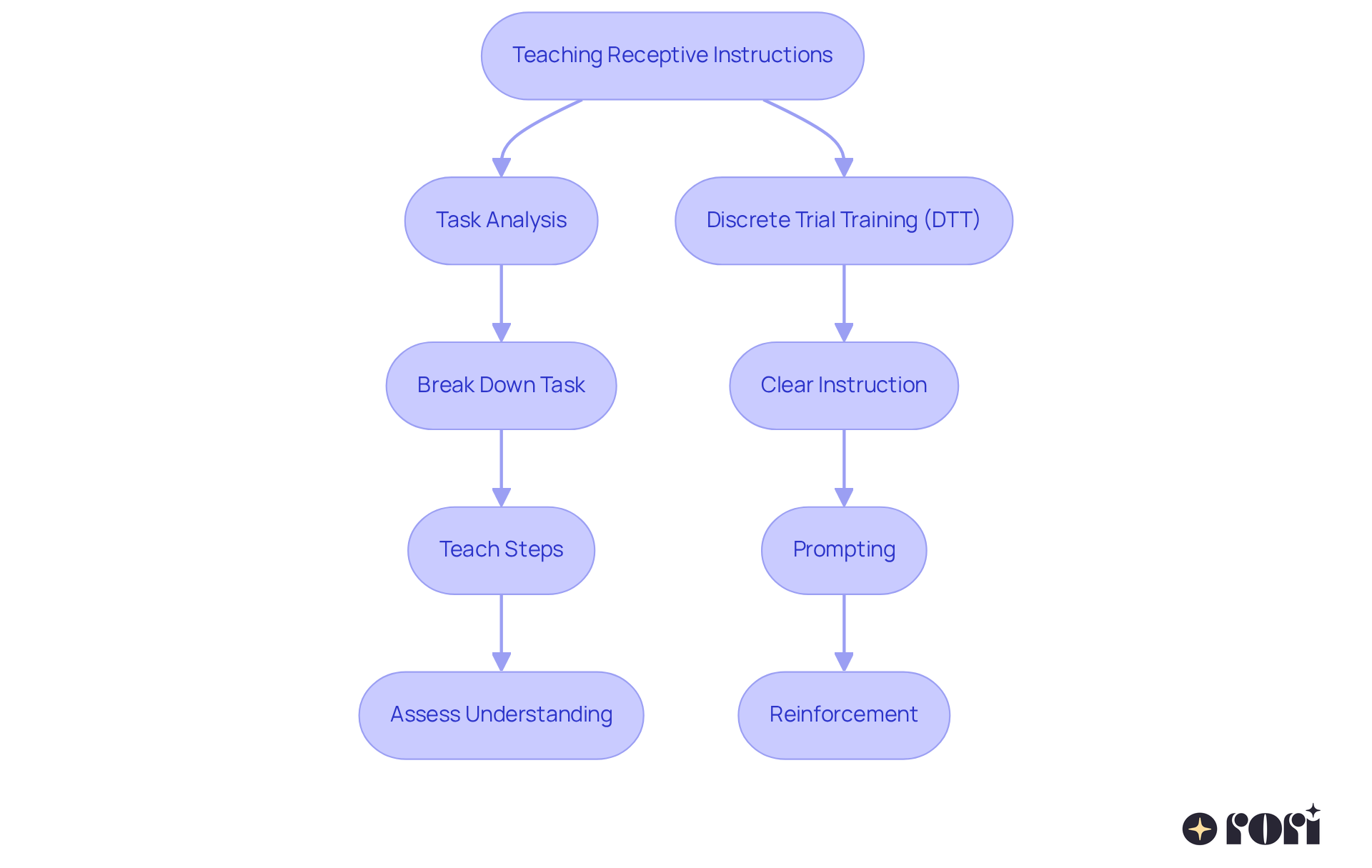
Including stimulating objects like toys, games, and activities that resonate with a young person's interests is key for promoting engagement in receptive language acquisition. Applied Behavior Analysis (ABA) is a personalized therapy that adapts to each individual's unique needs, making it essential to use these items as rewards or focal points during instruction. By tailoring activities to match preferences, therapists can create a positive learning environment that encourages active engagement and enhances their ability to follow directions in a fun and interactive way.
As therapists often highlight, creating a positive and engaging experience in therapy is crucial for inspiring young individuals and ensuring meaningful progress. Specific toys like Lego, Duplo, and blocks can be particularly effective in capturing preschoolers' attention. Plus, establishing a sensory-friendly setting can help children with sensitivities feel more at ease and involved. Positive reinforcement, such as celebrating children's achievements, further motivates them to actively participate in their learning journey.
Additionally, social skills group therapy, led by qualified therapists, enhances individuals' social interactions and communication within a group, promoting improved competence and relationships. This approach not only supports the development of receptive instructions in ABA but also highlights the importance of caregiver education in reinforcing these abilities at home. Let’s explore this together! We're here to help you every step of the way!
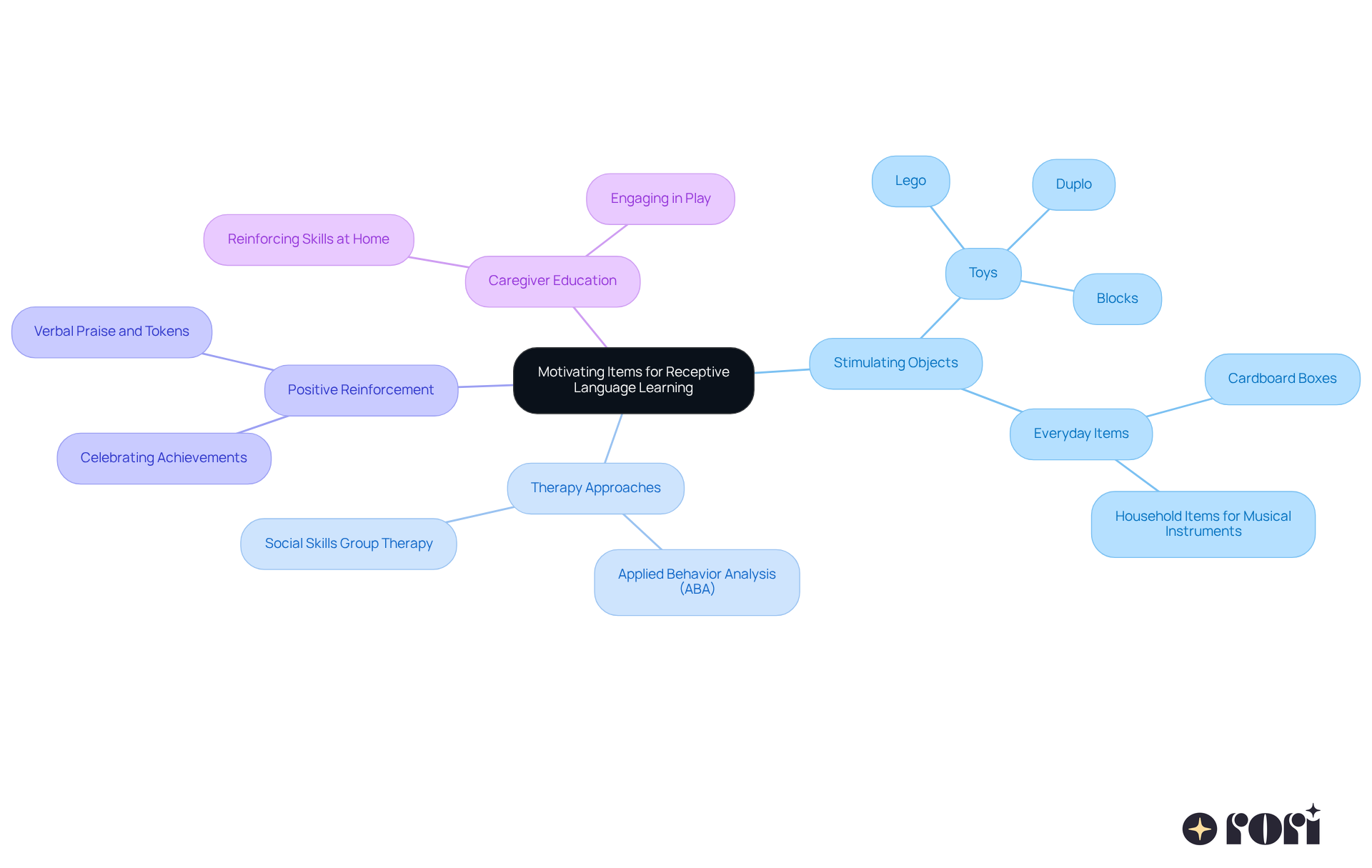
Flawless instruction is a fantastic way to support our young learners! By providing timely assistance and encouragement, we can help them reduce errors during their educational journey. This method not only boosts their confidence but also reinforces the right answers, making it easier for them to pick up receptive instructions aba while developing their language skills.
Research shows that giving prompts at the right moment can really enhance educational outcomes. When kids experience early success, it’s a huge motivator and keeps them engaged! As they become more skilled, therapists can gradually ease off on the prompts, fostering independence while still creating a nurturing learning environment.
Clinicians have seen how this approach is vital in helping children generalize their language skills. Receptive instructions aba are truly a key ingredient for effective ABA therapy. Let’s explore this together and see how we can support our little ones in their learning journey!
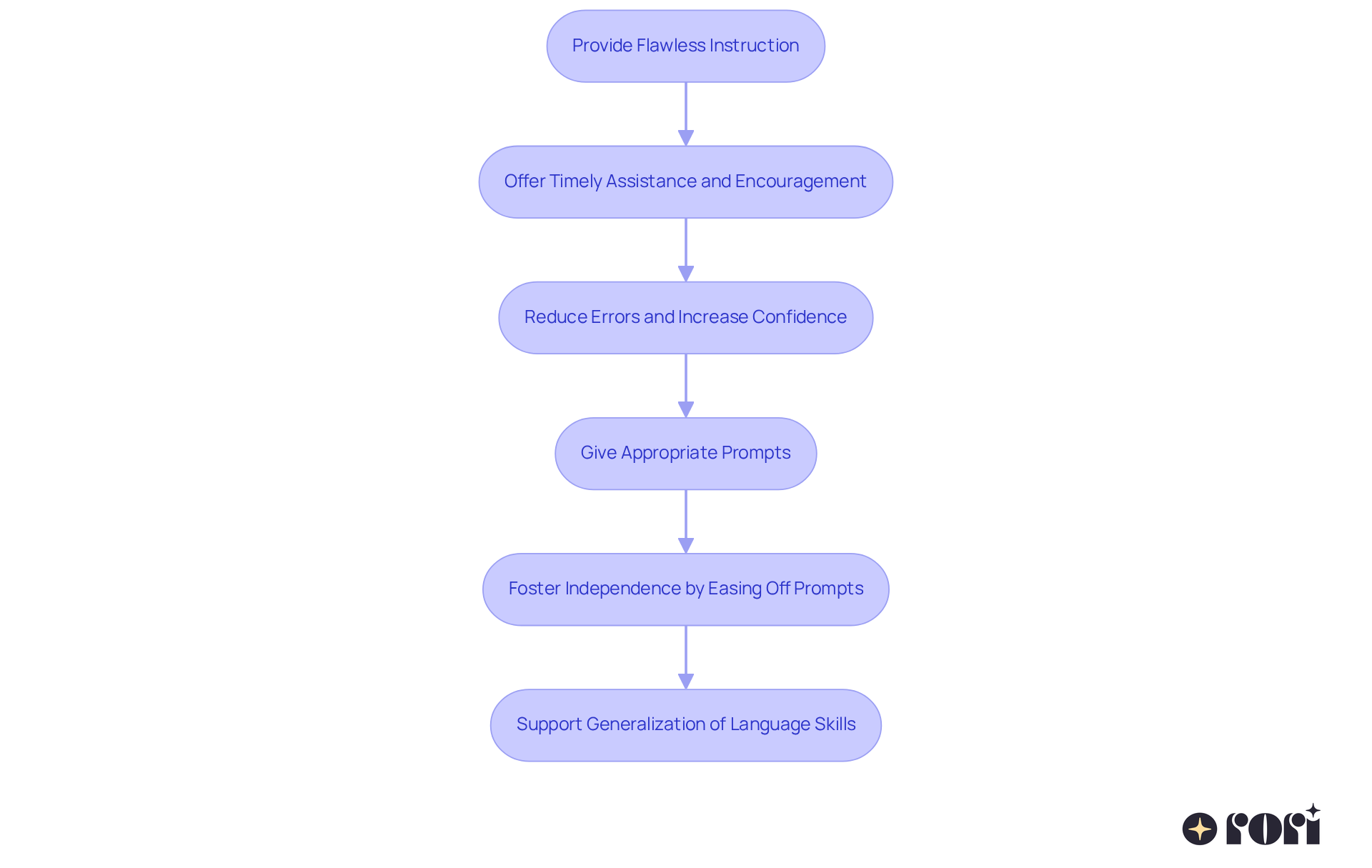
Consistency and repetition are truly the building blocks of effective receptive instructions ABA! When we incorporate receptive instructions ABA, along with the same language, visual aids, and routines across different settings, it really helps children grasp and remember information better. Caregivers, with a solid understanding of ABA principles and strategies, play an active role in this journey, ensuring that these approaches are reinforced at home.
Think about it: when kids are repeatedly exposed to receptive instructions ABA in various contexts, it strengthens their understanding, making it much easier for them to apply those skills in new situations. This active involvement not only boosts comprehension but also creates a sense of security and predictability for the child. Ultimately, this leads to improved behavioral outcomes and empowers caregivers in their important role.
Let’s explore this together! Your engagement makes a difference!

Incorporating engaging activities into receptive instructions ABA can significantly enhance motivation and participation, particularly within the framework of Applied Behavior Analysis (ABA) therapy. This approach is the only scientifically proven treatment for autism that’s covered by insurance. Activities like interactive games, storytelling, and role-playing not only make learning fun but also strengthen the skills being taught.
When we weave play into therapy, kids are more likely to engage with the material and practice following receptive instructions ABA in a relaxed and enjoyable setting. This approach works wonders when paired with early intensive behavioral intervention (EIBI), which has shown to enhance learning, verbal, and social skills in individuals with autism. Plus, social skills group therapy, led by trained therapists, helps improve social interactions and communication within a group.
Involving caregivers in these activities creates a supportive environment that boosts retention and understanding, ultimately leading to better communication and social interactions. Let’s explore this together! We’re here to help you every step of the way!
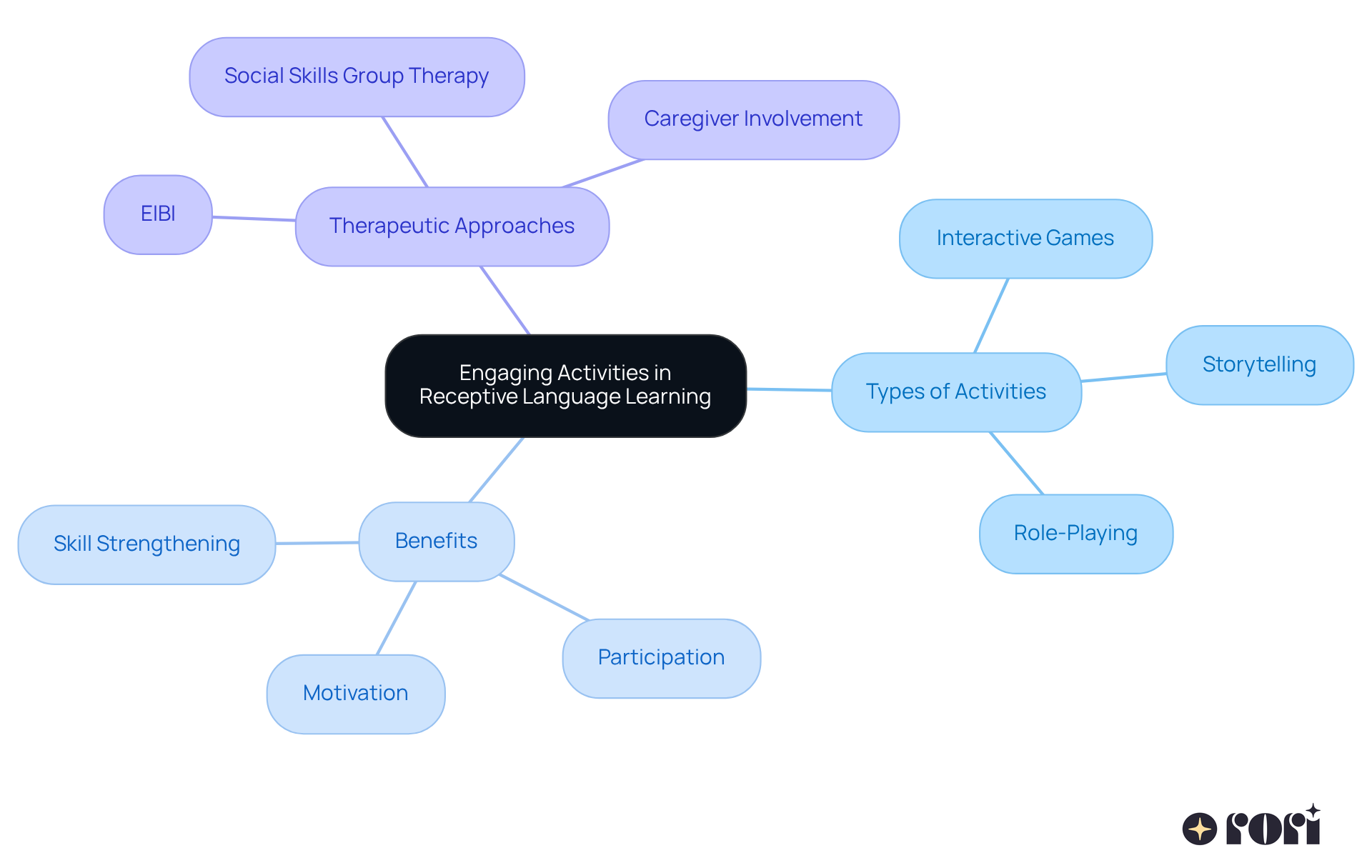
Regular assessment methods, including observational evaluations, standardized exams, and parental input, are essential in understanding receptive instructions ABA in individuals with autism. Observational evaluations give clinicians a closer look at a young person’s progress, highlighting specific areas that might need a little extra attention. Research shows that these evaluations can significantly enhance our understanding of a child’s skills, paving the way for tailored teaching approaches that support ongoing growth.
Involving parent feedback in the evaluation process adds depth to the information collected and fosters a collaborative approach to therapy. This ensures that interventions align with the child’s real-life experiences. Plus, treatment plans can be adjusted based on progress reports, making sure that the strategies used are responsive to each individual’s evolving needs. By embracing a multifaceted evaluation approach, clinicians can effectively refine their methods, ultimately leading to better outcomes in receptive instructions ABA and language development.
Empowering caregivers with ABA principles and techniques boosts their confidence and ability to support their child’s behavioral goals. This not only encourages informed decision-making but also positively impacts their development and the overall family dynamic. Let’s explore this together! We’re here to help you every step of the way!

Collaborative approaches that involve caregivers, therapists, and educators are essential for enhancing receptive instructions ABA in language development! When everyone works together, they can share insights, strategies, and resources that truly support the learner's educational journey.
Caregiver education plays a vital role in this collaboration. It helps caregivers understand ABA principles and strategies better, empowering them to make informed choices that positively affect their child’s progress. Plus, when caregivers are educated, they can communicate effectively with professionals, ensuring a consistent approach.
Consistent communication and teamwork are key! They help everyone stay on the same page, creating a unified support system that boosts the individual's potential for success in following receptive instructions ABA and enhancing communication skills. When caregivers are actively involved, it not only complements professional interventions but also leads to improved behavioral outcomes. This involvement can reduce caregiver stress and enhance family dynamics, making a lasting impact on the child's development.
Let’s explore this together! Every step you take in this collaborative journey makes a difference!

In ABA therapy, the effectiveness of receptive instructions really shines when we take a personalized approach that recognizes each child's unique needs. By using tailored strategies, clinicians can help children better understand and follow instructions, which fosters meaningful communication and social interaction. This commitment to customization not only enhances learning outcomes but also empowers caregivers to actively participate in their child's development.
Throughout this article, we've highlighted various strategies, such as:
Each of these elements plays a crucial role in creating a supportive learning environment where children can thrive. By integrating consistent practices, errorless teaching, and regular assessments, we reinforce the importance of a comprehensive approach to enhancing receptive language skills.
Ultimately, the journey toward effective receptive instruction in ABA therapy is a collaborative effort. It involves therapists, caregivers, and educators working hand in hand. By embracing teamwork and utilizing the best practices we've discussed, families can create a nurturing atmosphere that supports their child's language development and strengthens family dynamics. Engaging in this process can truly make a significant difference in the lives of children with autism, paving the way for improved communication and overall success.
Let’s explore this together! Remember, you’re not alone on this journey, and we’re here to help you every step of the way!
What is the focus of Rori Care's ABA therapy?
Rori Care focuses on personalized receptive instruction strategies in ABA therapy, tailoring techniques to each individual's unique strengths and challenges to improve understanding and following instructions.
How does Rori Care ensure the effectiveness of its strategies?
Rori Care uses data-driven insights, such as visual supports and structured programs, and continuously adapts strategies to ensure sustained progress and engagement throughout the therapy process.
What innovative technology does Rori Care use to support therapy?
Rori Care employs advanced AI technology to automate the creation of progress reports, allowing more time for youth treatment and providing caregivers with clear insights into their child's development.
Why is early detection of autism important according to the article?
Early detection of autism by ages 4.5 to 5 is crucial for prompt intervention, which can significantly improve outcomes for children.
What role do visual communication tools play in enhancing receptive language skills?
Visual communication tools, such as picture schedules, flashcards, and visual timers, help clarify verbal instructions, making it easier for individuals, especially those with behavioral challenges, to understand and respond appropriately.
How can parents enhance receptive instruction at home?
Parents can enhance receptive instruction by using targeted language, visual aids, and organized routines during everyday activities, which helps reinforce skills learned in therapy.
What is the impact of parental engagement on children's learning?
Parental engagement significantly improves children's ability to generalize communication skills and leads to greater success in various settings, as consistent reinforcement from parents is beneficial.
How does caregiver education contribute to a child's development?
Caregiver education in ABA principles empowers parents to make informed decisions that positively influence their child's development, reduces caregiver stress, and improves family dynamics.
What is the overall commitment of Rori Care regarding personalized care?
Rori Care is committed to personalized care by implementing customized strategies and fostering meaningful communication and social interaction in children with autism.